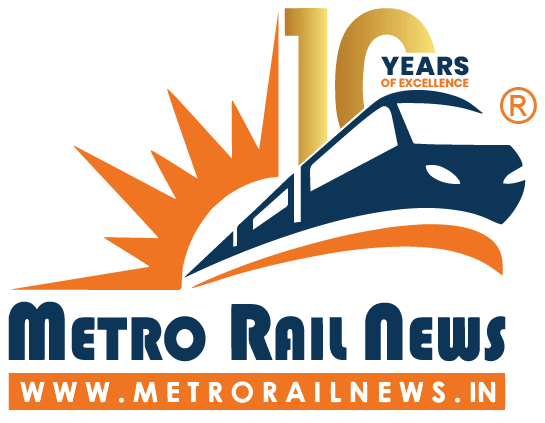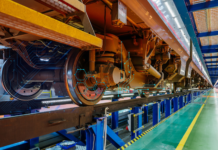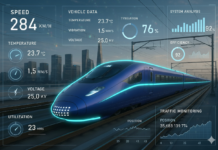The Uttarakhand Metro Rail Corporation (UKMRC) is developing the Dehradun-Haridwar-Rishikesh Metro Corridor in order to provide residents with convenient travel options. The proposed metro system would connect Dehradun, Rishikesh, and Haridwar. The Haridwar-Rishikesh Metro line shall run parallel to the National Highway that connects the two cities.

- The upcoming metro project shall consist of a 73-kilometer elevated track.
- The Metro Corridor will serve over a lakh passengers daily.
- The Uttarakhand Metro Rail Corporation Limited will carry it out.
Uttarakhand’s metro train project is scheduled to be completed by 2024. The detailed and comprehensive project report has been submitted to the state government and is expected to be approved soon. The initiative is expected to improve connectivity and enhance the pedestrian flow and footfall between Rishikesh (the ‘yoga capital of the world’) and Haridwar (a Hindu pilgrimage site in North India). Once operational, roughly one lakh commuters daily are estimated to use the Dehradun-Haridwar-Rishikesh Metro Corridor. This will significantly reduce road traffic.
Uttarakhand Metro Rail, Urban Infrastructure and Building Construction Corporation Limited have developed & prepared the comprehensive project report for Metro Neo, an innovative transportation system, in-house. It relies and is based on both the primary and secondary traffic and data analysis. In November 2020, the Ministry of Housing and Urban Affairs (MoHUA) specified Metro Neo standard specifications. The first Metro Neo project has been proposed for Nashik, Maharashtra.
Details of the project
- The project is being carried out by Uttarakhand Metro Rail Corporation Limited.
- The detailed and comprehensive project report will be approved by the state cabinet before being sent to the Union Ministry of Urban Development for perusal and approval.
- Metro services are expected to begin operations in Dehradun within the next three years.
- The Unified Metropolitan Transport Authority approved a 73-kilometer-long Dehradun-Haridwar-Rishikesh Metro Corridor in Uttarakhand in June 2020.
- The Uttarakhand state government signed a memorandum of understanding (MoU) with the Delhi Metro Rail Corporation in December 2016 to provide its detailed project report.
- The project’s estimated cost is Rs 40,150 crore.
- The metro line’s tracks will be standard gauge.
Route Details
The 73-kilometer elevated metro will be completed in two stages. It will feature two lines that will connect at Nepali Farm on the banks of the Song River.
Phase 1 / Line-1: Haridwar – Rishikesh
- Length: 32 Km
- Number of Stations: Ten
- Route Description: The projected metro line would begin near the Jatwara Bridge in Jwalapur (western Haridwar). It will then run parallel to the NH-34 Haridwar-Rishikesh highway. The metro line would end at Rishikesh’s Chandrabhaga Bridge.
Phase 2 / Line-2: Dehradun (ISBT) – Nepali Farm
- Length: 41 Km
- Route Description: The route will follow National Highway-7 from Nepali Farm to Dehradun’s Inter-State Bus Terminal (ISBT) via the Vidhan Sabha.
Conclusion
Uttarakhand, a Himalayan state in northern India, has 39,000 km of road network, two domestic airports, and 339.80 km of rail connections. The Uttarakhand Metro Rail Corporation (UKMRC) has announced plans to build state-of-the-art rapid transit systems in Dehradun, Haridwar, and Rishikesh in an effort to reduce traffic congestion in the state. According to MD Jitendra Tyagi, UKMRC GFX, the nation’s first Neo Metro would be deployed on two corridors in Dehradun, while the country’s first Pod cab will be introduced in Haridwar. The aforementioned initiatives aim to significantly increase the state’s environmentally friendly and cost-effective transport options.
The Neo-Metro, a mass transit system based on rubber tyres, will be powered by an overhead electric conductor and will run on a dedicated elevated track. On the other hand, Pod taxis are driverless electric vehicles that travel on specifically built tracks. These modern and futuristic public transportation systems will help improve connectivity and reduce traffic congestion in their respective locations. In addition, the UKMRC intends to build two ropeways in Haridwar and Rishikesh to improve the travel experience for pilgrims and spiritual seekers visiting the region. Ropeways and Pod taxis will be built using a public-private partnership (PPP) model, with equal funding from the central and state governments. The Neo-Metro project will be supported and financed jointly by the central and state governments.

The two Neo Metro routes, totaling 22.42 kilometres in length, will connect ISBT to Gandhi Bagh and FRI to Raipur, effectively covering the city’s breadth and length. The Neo-Metro trains would have a top speed of 70 kilometres per hour and an average speed of 25 kilometres per hour. The state government has already approved the project, which is now pending approval from the Union Ministry of Housing and Urban Affairs.
Latest Update
To relieve traffic congestion, the Uttarakhand Metro Rail Corporation (UKMRC) will build state-of-the-art rapid transit systems in Dehradun, Haridwar, and Rishikesh over the next four years. The first Neo Metro line in the country would run along two corridors in Dehradun. In addition, Haridwar will be home to the country’s first Pod taxi. The decision will significantly improve the state’s environmentally friendly and cost-effective public transportation. Neo-Metro is a rubber-tired mass transit system powered by an overhead electric conductor. It travels on an elevated track. Pod (Provide on Demand) taxis are driverless electric vehicles that travel on a specially built track.

Additionally, the corporation plans to build two ropeways in Haridwar and Rishikesh to improve the travel experience of tourists who come from all over the world for pilgrimage and spiritual solace. Ropeways and Pod taxis will be constructed under PPP, while the Neo Metro project would be shared equally by the Centre and the state. The two Neo Metro routes from ISBT to Gandhi Bagh and FRI to Raipur will span the city’s width and length (22.42 km).
Additionally, the corporation plans to build two ropeways in Haridwar and Rishikesh to improve the travel experience of tourists who come from all over the world for pilgrimage and spiritual solace. Ropeways and Pod taxis will be constructed under PPP, while the Neo Metro project would be shared equally by the Centre and the state. The two Neo Metro routes from ISBT to Gandhi Bagh and FRI to Raipur will span the city’s width and length (22.42 km).

The Neo-Metro train would have a top speed of 70 kilometres per hour and an average speed of 25 kilometres per hour. The project has already been approved by the state government and is awaiting clearance from the Union Ministry of Housing and Urban Affairs. The Pod taxis would travel 20.74 km with 21 stops in Haridwar. The main stretch of the Pod taxi will be 14.55 kilometres long, connecting Sitapur (Jwalapur) to Bharat Mata Mandir via three tributary stretches: City Hospital to Daksh Mandir, Valmiki Chowk to Laltaro Bridge, and Ganeshpuram to DAV School. The 2-kilometre-long ropeway will transport pilgrims in 9 minutes from Har Ki Pauri to Chadi Devi. UKMRC has stated that they are planning to construct Asia’s longest ropeway, measuring approximately 6.5 kilometres, in Rishikesh.







Nice coverage about project .